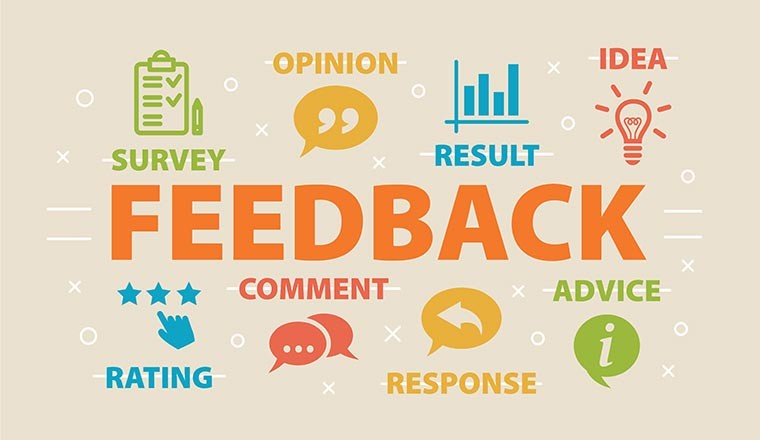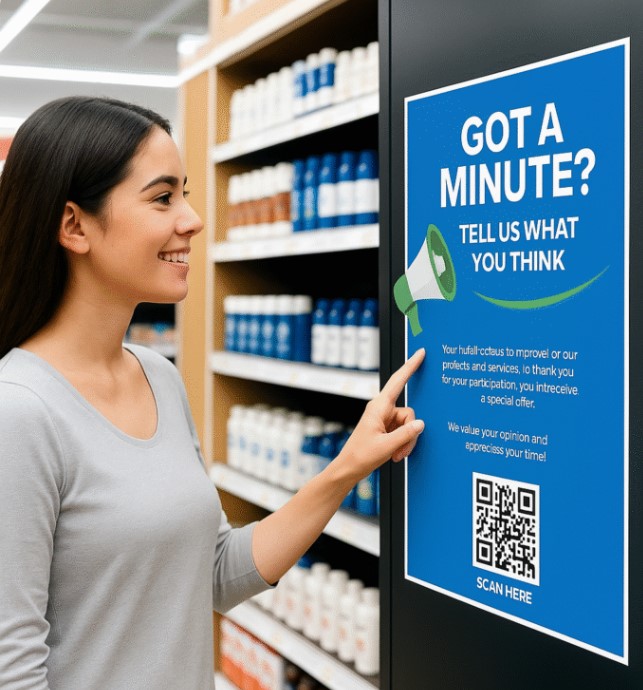When local businesses use customer feedback to drive innovation, they create room for growth. Every comment, complaint, or suggestion is more than just an opinion. It is a direct signal of what people truly value and where your business might be falling short.
Feedback touches every corner of innovation, from improving products and refining services to rethinking marketing and reshaping your business model. Ignoring it is like throwing away free advice that could spark your next breakthrough.
To make the most of feedback, you need more than scattered surveys. You need methods that capture genuine voices, metrics that highlight patterns, and a mindset that treats every interaction as a chance to improve. In this article, we will explore how to gather meaningful feedback, analyze it without bias, and turn it into practical changes. If you have ever wondered how to use customer feedback to drive innovation in your business, this guide will give you a clear path toward lasting growth.
How To Collect Customer Feedback
For local businesses, listening to customers is more than a nice gesture. It is survival. If you want to use customer feedback to drive innovation, you need to open as many doors as possible for people to share what they think. Short surveys at the checkout counter, a suggestion box at the front desk, or follow-up messages on WhatsApp can reveal quick insights. Support tickets and complaint logs show where customers are struggling. Social media and online reviews highlight honest, unfiltered opinions. If you run a restaurant, a short interview at the table or a tasting session can uncover what dishes excite customers. If you run a salon, a co-creation session with loyal clients can help you shape new services.
But feedback should not come only from the most vocal customers. A World Bank study found that businesses in developing markets often over-rely on a narrow group of respondents, which leads to products and services that miss the wider community’s needs (World Bank, 2020). For a local business, this might mean you are hearing only from repeat customers while missing the views of first-timers or those who never return. To avoid this bias, reach across different age groups, income levels, and neighborhoods.

You also need to go beyond yes-or-no answers. Asking open-ended questions such as “What would make you come back again?” or “What would make this service easier for you?” brings out details that multiple-choice questions cannot capture. When you pair open responses with structured questions, you get both measurable data and stories rich enough to spark new ideas.
When thinking about how to use customer feedback to drive innovation in your business, remember that small signals can lead to big changes. A corner store adjusting its hours because customers said evenings work better, or a tailoring shop adding mobile pick-up after hearing about customers’ tight schedules, are examples of feedback fueling business growth. Local businesses that collect, listen, and act consistently are the ones that turn everyday conversations into lasting innovation.
READ ALSO: How To Grow Your Business In Nigeria With Customer Feedback
Analyzing & Prioritizing What Matters
Collecting feedback is only the first step. To use customer feedback to drive innovation, you need to separate the noise from the insights. That begins with analysis, and there are two types – qualitative analysis and quantitative analysis.
Qualitative Analysis
Qualitative analysis focuses on words and stories. It is the process of examining open-ended comments, reviews, or interviews to uncover themes, emotions, and pain points.
Quantitative Analysis
Quantitative analysis focuses on numbers. It uses surveys, ratings, or metrics to show how many people share a view or how strong that opinion is. Together, they give you both the “what” and the “why.”
For local businesses, spotting patterns is critical. A café may notice repeated complaints about slow service in busy hours. Looking deeper, the root cause might be understaffing or an outdated checkout process. According to Harvard Business Review, companies that perform regular root cause analysis reduce recurring customer issues by a good percentage (HBR, 2024). That means fewer problems repeating and more room for business growth.
Once insights are clear, you must decide what to act on first. This is where prioritization frameworks help. Ask yourself: What impact will this change have? How feasible is it with my current resources? Does it align with my long-term goals? What is the potential return on investment compared to the effort required? A tailoring shop may hear requests for online ordering and faster alterations. While both matter, online ordering could bring in new customers and revenue, while faster alterations might only improve satisfaction for existing ones. By weighing impact against effort, the shop can make smarter choices.
When thinking about how to use customer feedback to drive innovation in your business, remember that action without focus can waste time. Analysis and prioritization are what turn scattered suggestions into real progress. They help you choose the ideas that create meaningful change, build loyalty, and keep your business moving forward.
Turning Feedback into Innovation
Collecting and analyzing feedback only matters if it leads to action. The real value comes when you turn customer insights into fresh ideas and then test those ideas in the real world. Rapid prototyping makes this possible. Instead of waiting months to perfect a solution, create a small version and let customers interact with it. For a local bakery, this could mean testing a new recipe with a few regulars before adding it to the menu. Pilot testing works the same way. A retail shop could trial extended hours for two weeks to see if sales actually increase before making it permanent.
Innovation also depends on collaboration. It is not just the job of the business owner. Marketing, operations, and customer service all see different sides of the customer journey. When these perspectives come together, you get solutions that are practical, creative, and customer-focused. A restaurant may gather input from kitchen staff, waiters, and delivery partners to redesign service speed. That level of teamwork ensures no good idea is missed.

Finally, innovation should not be treated as a one-off project. Embedding feedback loops means making improvement a habit. Ask. Act. Review. Repeat. A World Economic Forum report found that businesses with strong feedback systems are 21 percent more likely to sustain long-term growth (WEF, 2025). For local businesses, this means treating every review, complaint, or suggestion as a spark for the next improvement.
If you want to use customer feedback to drive innovation in your business, you must see it as a cycle, not an event. Continuous learning, quick testing, and team collaboration are what turn insights into real changes that fuel business growth and keep your community loyal.
Measuring Impact & Communicating Back
Innovation only matters if it makes a difference. That is why tracking results is just as important as collecting feedback in the first place. Local businesses can measure progress through simple but powerful metrics. Time-to-market shows how quickly you can turn customer ideas into real offerings. Customer satisfaction and Net Promoter Score (NPS) reveal how well your changes resonate. Retention rates and revenue uplift highlight whether improvements are keeping people loyal and spending more. Cost savings and innovation success rates show if new ideas are actually worth the investment.
Equally important is closing the loop. Customers want to know their voices matter. A neighborhood café that introduces mobile ordering should tell customers it happened because of their feedback. This transparency builds trust and invites even more input.
When you use customer feedback to drive innovation in your business, communication turns data into relationships. It shows customers they are partners in your growth. For local businesses, this creates a cycle where honest feedback fuels smarter changes, smarter changes boost business growth, and growth inspires customers to keep sharing. That loop is what keeps innovation alive and thriving.
Building a Culture That Embraces Feedback-Driven Innovation
Lasting innovation is not built on one good idea. It grows from a culture where listening and acting on feedback become part of everyday business. That begins with leadership. Owners and managers must commit resources—whether time, staff, or budget—to ensure customer insights are collected and applied. When leaders take feedback seriously, everyone else follows.
Employees also play a vital role. A shop assistant who hears daily complaints about wait times, or a server who notices which specials never sell, holds valuable insight. Empowering staff at every level to share these observations creates a steady stream of ideas that leaders alone could never capture. Recognizing and rewarding small improvements encourages more people to speak up.
Technology can help too. Even small local businesses can benefit from affordable feedback management tools, simple analytics, or AI-driven sentiment analysis that highlights hidden patterns. These tools make it easier to see what customers really value.
When you use customer feedback to drive innovation in your business, culture is the glue that keeps the process alive. A feedback-driven culture does more than fix problems. It creates momentum, shows customers that your business is willing to learn, and lets employees know that their voice matters. And it fuels the kind of business growth that lasts, because it is grounded in the real needs of the community you serve.
READ ALSO: Customer Feedback And Customer Reviews: Which One Helps Improve Your Business In 2025?
How To Use Customer Feedback To Drive Innovation Leveraging AI
Collecting feedback the traditional way often takes too long. Customers fill out paper forms that no one reviews quickly, or they leave comments online that get lost in the noise. This delay means businesses miss out on insights they could act on right away. AI changes that. By automating the way feedback is gathered and analyzed, local businesses can finally keep up with what customers are saying in real time. That speed is what makes it possible to use customer feedback to drive innovation before competitors catch on.
Insight IQ Hub is built to make this easy. The platform allows customers to scan a simple QR code placed on tables, counters, or receipts. Once scanned, they can share quick, honest feedback that the system instantly processes. With AI-powered analysis, Insight IQ Hub identifies trends, sentiments, and patterns, then presents them in clear dashboards you can act on immediately.
For a local restaurant, this means knowing within hours if a new dish is working. For a salon, it means spotting repeated complaints about wait times before they turn into lost customers. By cutting out the delay, Insight IQ Hub helps small businesses collect feedback faster and act sooner, which leads directly to stronger customer loyalty and measurable business growth.
You can see how Insight IQ Hub works in the video below.
If you have ever wondered how to use customer feedback to drive innovation in your business, this is your chance to try it out. Sign up for Insight IQ Hub today and start turning everyday customer voices into real improvements that fuel growth.
Conclusion
Every local business has the chance to innovate. The steps are clear. Collect customer feedback. Analyze it carefully. Prioritize the ideas that matter most. Act on them quickly. Measure the results so you know what is working. This cycle creates a rhythm of progress that keeps your business learning and growing.
The easiest way to begin is small. Pick one feedback channel, like QR codes on receipts or a short survey after service. Track one metric that matters, such as repeat visits or customer satisfaction. Commit to repeating the process. Over time, the results add up.
When you use customer feedback to drive innovation in your business, you turn everyday conversations into meaningful business growth. Tools like Insight IQ Hub make the process faster and simpler, so you can listen, adapt, and thrive. Start today, and let your customers guide the next chapter of your success.



